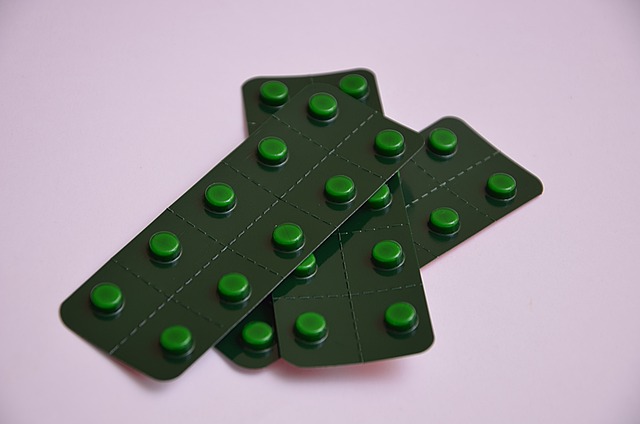Post-Traumatic Stress Disorder (PTSD) is a complex psychological condition caused by traumatic events, leading to symptoms like re-experiencing, avoidance, negative thoughts, and hyperarousal. Traditional therapies such as Cognitive Behavioral Therapy (CBT) and Eye Movement Desensitization and Reprocessing (EMDR) are evidence-based treatments that focus on changing thought patterns and processing traumatic memories. CBT challenges negative thinking, while EMDR uses bilateral stimulation to reduce emotional intensity. Other effective PTSD treatments include exposure therapy, group therapy, alternative therapies like art and music, and medication for comorbid conditions. Integrating self-care practices alongside professional therapy is vital for lasting recovery.
“Post-Traumatic Stress Disorder (PTSD) is a complex mental health condition that requires specialized therapeutic approaches. This article explores a comprehensive range of effective treatments designed to help individuals manage and overcome PTSD symptoms. From traditional therapies to innovative techniques, we delve into the benefits of cognitive behavioral therapy (CBT), eye movement desensitization and reprocessing (EMDR), exposure therapy, group support, and alternative therapies like art and animal-assisted care. Additionally, we discuss medication options and self-care strategies for holistic PTSD treatment.”
Understanding PTSD: Symptoms and Causes

Post-Traumatic Stress Disorder (PTSD) is a complex psychological condition that can significantly impact an individual’s daily life and overall well-being. It often arises as a response to traumatic events, such as war, accidents, natural disasters, or personal assaults. Understanding PTSD involves recognizing its various symptoms, which can be categorized into re-experiencing, avoidance, negative thoughts and feelings, and hyperarousal.
The causes of PTSD are deeply rooted in the individual’s experience of trauma. When faced with an overwhelming event, the body’s natural stress response is triggered, releasing a surge of hormones like adrenaline and cortisol. Over time, repeated exposure to traumatic memories or triggers can lead to long-term changes in brain chemistry and structure, making it challenging for individuals to cope effectively. Effective PTSD treatment focuses on helping individuals process these traumatic experiences, manage symptoms, and regain control over their lives.
Traditional Therapies for PTSD Management

Traditional therapies play a pivotal role in managing Post-Traumatic Stress Disorder (PTSD). Cognitive Behavioral Therapy (CBT) is one such widely recognized and effective approach, focusing on identifying and changing negative thought patterns and behaviors triggered by traumatic memories. This therapy empowers individuals to cope with distressing symptoms like nightmares, flashbacks, and severe anxiety.
Another proven method is Eye Movement Desensitization and Reprocessing (EMDR), which assists patients in processing traumatic memories while simultaneously engaging in bilateral stimulation, such as side-to-side eye movements or taps. EMDR helps reduce the intensity of emotional responses associated with traumatic memories, offering significant relief from PTSD symptoms. These traditional therapies have been extensively studied and are recommended by many mental health professionals for effective PTSD treatment.
Cognitive Behavioral Therapy (CBT): A Focus on Thoughts and Behaviors

Cognitive Behavioral Therapy (CBT) is a highly effective therapeutic approach for Post-Traumatic Stress Disorder (PTSD). This evidence-based method focuses on identifying and modifying negative thought patterns and behaviors that can contribute to symptoms of PTSD, such as avoidance, re-experiencing, and hyperarousal. CBT helps individuals challenge and reframe distorted thinking, replacing unhelpful cognitions with more realistic and adaptive beliefs.
By targeting specific thoughts and behaviors, CBT enables patients to manage their symptoms effectively. It encourages them to face traumatic memories in a safe and controlled environment, gradually reducing the intensity of distressing reactions. This process allows individuals to gain a sense of control over their lives, develop healthy coping strategies, and improve overall well-being, making it a prominent choice in PTSD treatment.
Eye Movement Desensitization and Reprocessing (EMDR): Unlocking the Mind's Potential

Eye Movement Desensitization and Reprocessing (EMDR) is a groundbreaking therapeutic approach that has revolutionized the way we address Post-Traumatic Stress Disorder (PTSD). This method harnesses the power of bilateral stimulation, often through side-to-side eye movements, to help individuals process traumatic memories. By triggering a reprocessing mechanism in the brain, EMDR allows patients to reframe and reduce the intensity of their emotional responses to distressing events. As a result, it becomes easier for them to cope with memories that have been locked away due to trauma.
EMDR therapy offers a unique perspective by suggesting that our minds are equipped with inherent healing capabilities. Through careful guidance, this technique unlocks these potential resources, enabling individuals to heal from deep-seated PTSD. With its ability to desensitize patients to traumatic content and promote positive cognitive associations, EMDR has gained significant recognition as an effective PTSD treatment. Studies have shown remarkable outcomes, providing hope and improved quality of life for those struggling with the lasting effects of trauma.
Exposure Therapy: Facing Fears Head-On

Exposure therapy is a powerful and effective therapeutic approach for Post-Traumatic Stress Disorder (PTSD). It works by helping individuals confront and process their traumatic memories in a safe and controlled environment. Through gradual and repeated exposure to the trauma, patients can learn to manage their fear and anxiety responses. This process allows them to realize that they can handle the intense emotions associated with the event, ultimately reducing the power the trauma holds over them.
The therapy typically involves a structured series of steps where the therapist guides the patient through recalling and retelling traumatic experiences while experiencing reduced physical and emotional reactions. Over time, patients become desensitized to the triggers that once caused distress, leading to improved mental health and better coping strategies for managing PTSD symptoms.
Group Therapy and Peer Support: The Power of Connection

Group therapy offers a powerful approach to PTSD treatment by fostering connection and creating a supportive community. Individuals with PTSD often struggle with feelings of isolation and disconnection, making peer support incredibly beneficial. Sharing experiences and stories within a safe, moderated group allows individuals to normalize their traumas and realize they are not alone in their struggles. This collective environment encourages empathy, understanding, and the development of coping strategies from those who have had similar experiences.
Peer support plays a crucial role in the healing process as it provides a sense of belonging and validation. Group members can offer encouragement, perspective, and practical advice, enhancing the effectiveness of PTSD treatment. Through open dialogue and shared learning, individuals can develop new insights into their trauma responses, challenge negative beliefs, and build resilience. This interdependence within a group setting is transformative, empowering those affected by PTSD to take control of their healing journey.
Alternative Approaches: Art, Music, and Animal-Assisted Therapies

In addition to traditional talk therapies, alternative approaches like art, music, and animal-assisted therapies are gaining recognition as effective methods for PTSD treatment. These innovative techniques offer unique ways for individuals to express themselves, process traumatic memories, and find healing. For instance, art therapy provides a non-verbal outlet for emotions and experiences, allowing clients to create visual representations of their inner worlds and work through complex feelings associated with trauma.
Music therapy, another powerful tool, utilizes rhythm and melody to promote emotional regulation, reduce anxiety, and enhance communication. It can help individuals reconnect with themselves and find solace in creative expression. Animal-assisted therapies, such as equine-assisted or dog-assisted interventions, offer a calming presence and facilitate social interaction, providing comfort and support during the healing process. These alternative approaches complement conventional PTSD treatment, contributing to improved mental health outcomes for those struggling with trauma-related disorders.
Medication Options for Accompanying Symptoms

Medication can play a significant role in managing symptoms associated with Post-Traumatic Stress Disorder (PTSD). Many individuals with PTSD experience comorbid conditions such as anxiety, depression, and insomnia, all of which can be treated with targeted pharmaceuticals. Selective Serotonin Reuptake Inhibitors (SSRIs) are commonly prescribed to reduce symptoms of anxiety and depression, while certain medications like prazosine or clonidine may help manage intense flashbacks and nightmares.
These medicational options work by regulating neurotransmitters in the brain, addressing the chemical imbalances often present in individuals with PTSD. It’s important to note that medication is typically most effective when combined with other therapeutic approaches, such as cognitive-behavioral therapy (CBT), ensuring a holistic and comprehensive PTSD treatment plan.
Self-Care and Lifestyle Changes for Long-Term Healing

For individuals seeking long-term healing from PTSD, integrating self-care practices and lifestyle changes is essential alongside professional therapy. This involves prioritizing consistent, quality sleep as disruptions can exacerbate symptoms. Establishing a relaxing bedtime routine, maintaining a regular sleep schedule, and creating a comfortable sleep environment are key strategies. Similarly, regular physical activity, such as walking, yoga, or swimming, releases endorphins that boost mood and reduce stress.
Nutrition also plays a vital role in PTSD treatment; a balanced diet rich in vitamins, minerals, and omega-3 fatty acids supports brain health and overall well-being. Mindfulness practices like meditation or deep breathing exercises help individuals stay grounded in the present moment, reducing flashbacks and intrusive thoughts. Incorporating these self-care strategies into daily life fosters resilience and promotes sustainable recovery for those navigating PTSD.
